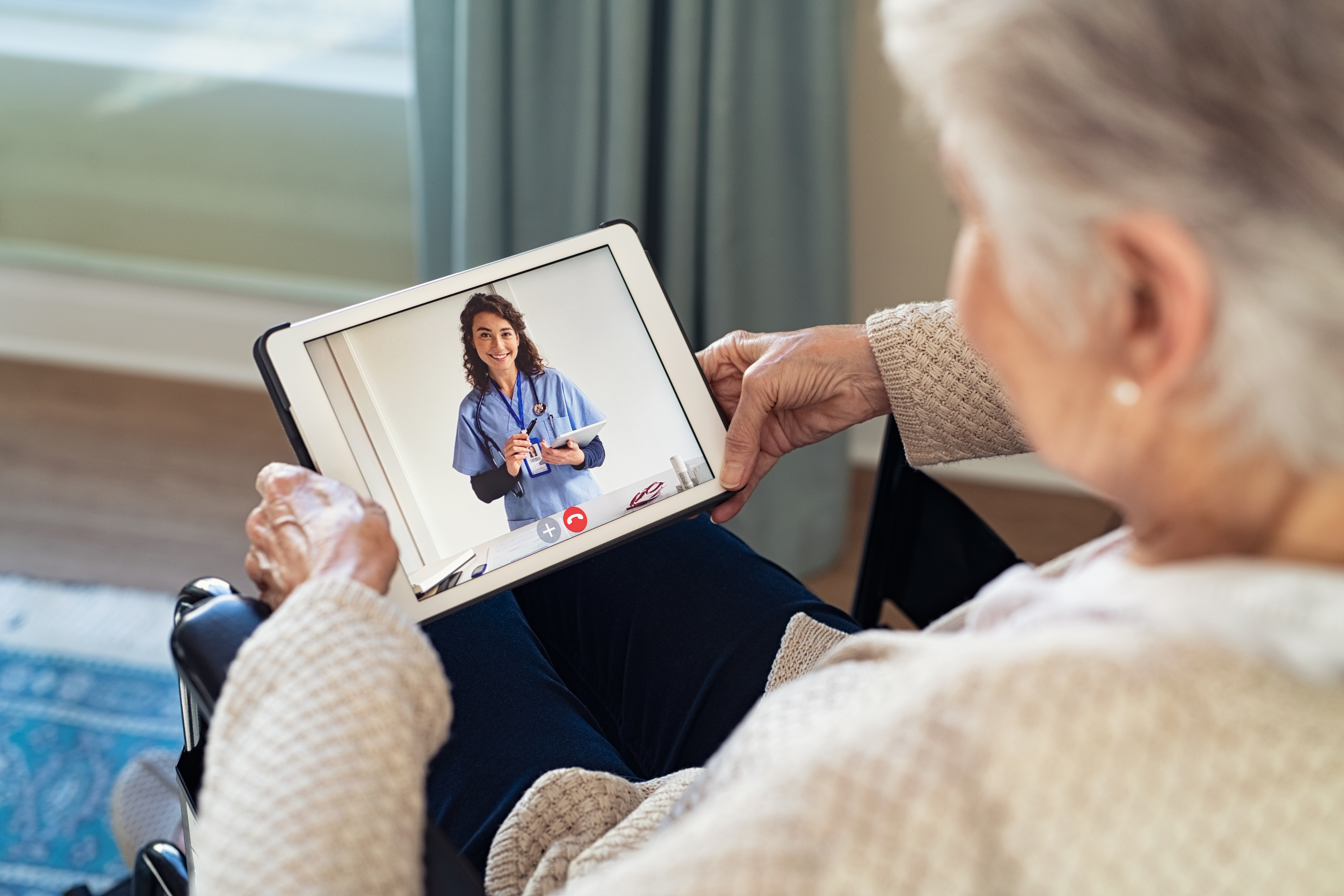10 Telehealth Benefits Revolutionizing Healthcare Access and Well-Being
As technology continues to permeate every facet of our lives, healthcare is no exception. Telehealth, the practice of providing medical care remotely through digital platforms, has emerged as a transformative force, redefining how we perceive and access healthcare. This revolution is not just about convenience; it encompasses a wide array of benefits that are reshaping patient experiences and healthcare delivery. The global pandemic accelerated the adoption of telehealth, revealing its potential to improve healthcare access, efficiency, and overall well-being. By breaking down geographical barriers, telehealth ensures that quality care is accessible to individuals regardless of their location. As we embark on this exploration, it is essential to recognize that telehealth is not merely a technological advancement but a catalyst for a healthcare revolution that prioritizes patient well-being and efficiency.
Expanding Access to Healthcare

One of the most significant advantages of telehealth is its ability to expand access to healthcare services, particularly for individuals in remote or underserved areas. Traditional healthcare systems often struggle to reach these populations due to geographical limitations and resource constraints. Telehealth bridges this gap by enabling patients to connect with healthcare providers from the comfort of their homes, eliminating the need for long-distance travel. This accessibility is especially crucial for individuals with mobility issues or chronic conditions that make frequent travel challenging. Telehealth also addresses the issue of healthcare deserts—regions with a shortage of medical professionals and facilities. By leveraging digital platforms, telehealth allows patients in these areas to receive timely consultations and follow-up care without the burden of traveling to distant urban centers. This not only improves health outcomes but also reduces the strain on overburdened healthcare systems in metropolitan areas. Furthermore, telehealth's reach extends beyond national borders, enabling international consultations and collaborations that enhance the quality of care.
The expansion of telehealth services has also led to increased healthcare equity, as it provides marginalized communities with access to specialized care that may not be available locally. This democratization of healthcare ensures that all individuals, regardless of their socioeconomic status, have the opportunity to receive quality medical attention. As telehealth continues to evolve, its potential to transform healthcare accessibility and equity becomes increasingly apparent, making it a vital component of modern healthcare systems.
Enhancing Efficiency in Healthcare Delivery

Telehealth is not only about expanding access but also about enhancing the efficiency of healthcare delivery. Traditional healthcare systems often suffer from inefficiencies, such as long wait times, delayed appointments, and administrative bottlenecks. Telehealth addresses these issues by streamlining processes and optimizing resource allocation. By enabling remote consultations, telehealth reduces the need for in-person visits, freeing up valuable time and resources for healthcare providers. One of the key ways telehealth enhances efficiency is through the use of electronic health records (EHRs) and digital communication tools. These technologies facilitate seamless information exchange between patients and providers, reducing the risk of errors and improving the accuracy of diagnoses and treatment plans. Additionally, telehealth platforms often incorporate scheduling and reminder systems, minimizing missed appointments and ensuring that patients receive timely care. This efficiency translates into cost savings for both patients and healthcare systems, as unnecessary visits and hospitalizations are reduced.
Moreover, telehealth allows for more flexible and personalized care delivery, enabling providers to tailor their services to the unique needs of each patient. This adaptability is particularly beneficial for managing chronic conditions, where continuous monitoring and timely interventions are crucial. By leveraging telehealth, healthcare providers can offer proactive care that prevents complications and improves long-term outcomes. As a result, telehealth is not only revolutionizing how care is delivered but also how it is managed, making healthcare systems more efficient and effective.
Promoting Preventive Care and Early Intervention

Preventive care and early intervention are cornerstones of effective healthcare, and telehealth plays a pivotal role in promoting these practices. By facilitating regular check-ups and screenings, telehealth encourages patients to engage in proactive health management, reducing the risk of developing serious conditions. Remote monitoring tools, such as wearable devices and mobile health apps, enable continuous tracking of vital signs and health metrics, allowing for early detection of potential health issues. Telehealth's emphasis on preventive care is particularly beneficial for managing chronic diseases, such as diabetes and hypertension, where regular monitoring and lifestyle modifications are essential. Through virtual consultations, healthcare providers can offer personalized advice and support, empowering patients to make informed decisions about their health. This proactive approach not only improves patient outcomes but also reduces healthcare costs by preventing the progression of diseases and the need for costly interventions.
Furthermore, telehealth facilitates early intervention by providing timely access to medical expertise. In cases where immediate medical attention is required, such as acute infections or mental health crises, telehealth ensures that patients receive prompt care without the delays associated with traditional healthcare systems. This rapid response capability is crucial for preventing complications and improving recovery rates. As telehealth continues to evolve, its role in promoting preventive care and early intervention becomes increasingly significant, contributing to a healthier and more resilient population.
Supporting Mental Health and Well-being

Mental health is a critical component of overall well-being, and telehealth has emerged as a valuable tool for supporting mental health care. The stigma associated with mental health issues often prevents individuals from seeking help, but telehealth provides a discreet and accessible platform for receiving support. Virtual therapy sessions and counseling services allow patients to connect with mental health professionals from the privacy of their homes, reducing barriers to care. Telehealth's flexibility is particularly beneficial for mental health care, as it accommodates diverse needs and preferences. Patients can choose from a wide range of services, including individual therapy, group sessions, and support groups, all tailored to their specific circumstances. This personalized approach ensures that individuals receive the support they need, fostering a sense of empowerment and agency in their mental health journey.
Moreover, telehealth's integration with digital health tools enhances mental health care by enabling continuous monitoring and support. Mobile apps and online platforms offer resources for managing stress, anxiety, and depression, providing patients with tools to cope with daily challenges. These digital interventions complement traditional therapy, offering a holistic approach to mental health care. As telehealth continues to gain traction, its potential to revolutionize mental health support becomes increasingly evident, contributing to improved well-being and quality of life.
Reducing Healthcare Costs

One of the most compelling advantages of telehealth is its potential to reduce healthcare costs for both patients and providers. Traditional healthcare systems are often burdened with high operational expenses, driven by factors such as infrastructure, staffing, and administrative overhead. Telehealth addresses these challenges by minimizing the need for physical facilities and streamlining administrative processes, resulting in significant cost savings. For patients, telehealth offers a more affordable alternative to in-person visits, as it eliminates expenses related to travel, accommodation, and time off work. Additionally, telehealth reduces the likelihood of costly emergency room visits and hospitalizations by facilitating timely interventions and continuous monitoring. This proactive approach to healthcare not only improves patient outcomes but also reduces the financial burden on individuals and families.
Healthcare providers also benefit from telehealth's cost-saving potential, as it optimizes resource allocation and reduces operational inefficiencies. By leveraging digital platforms, providers can reach a larger patient base without the need for additional infrastructure, maximizing their capacity and revenue potential. Furthermore, telehealth's integration with electronic health records and digital communication tools streamlines administrative tasks, freeing up valuable time for patient care. As telehealth continues to evolve, its role in reducing healthcare costs becomes increasingly significant, making it an attractive option for both patients and providers.
Improving Patient Engagement and Satisfaction

Patient engagement and satisfaction are key indicators of healthcare quality, and telehealth has emerged as a powerful tool for enhancing these aspects. By providing patients with convenient and accessible care options, telehealth empowers individuals to take an active role in their health management. This sense of empowerment fosters a more collaborative relationship between patients and providers, improving communication and trust. Telehealth's emphasis on patient-centered care is particularly beneficial for improving engagement and satisfaction. Virtual consultations allow patients to receive personalized attention and support, tailored to their unique needs and preferences. This individualized approach ensures that patients feel heard and valued, enhancing their overall healthcare experience. Moreover, telehealth's flexibility allows patients to schedule appointments at their convenience, reducing the stress and inconvenience associated with traditional healthcare systems.
In addition to improving engagement, telehealth enhances patient satisfaction by providing timely access to care. Long wait times and delayed appointments are common sources of frustration for patients, but telehealth addresses these issues by facilitating prompt consultations and follow-up care. This efficiency translates into higher patient satisfaction, as individuals receive the care they need when they need it. As telehealth continues to gain traction, its potential to improve patient engagement and satisfaction becomes increasingly evident, contributing to a more patient-centered healthcare system.
Facilitating Continuity of Care

Continuity of care is a critical component of effective healthcare, and telehealth plays a pivotal role in facilitating this continuity. By enabling seamless communication and information exchange between patients and providers, telehealth ensures that individuals receive consistent and coordinated care across different settings. This continuity is particularly important for managing chronic conditions, where regular monitoring and timely interventions are crucial. Telehealth's integration with electronic health records and digital communication tools enhances continuity of care by providing healthcare providers with real-time access to patient information. This comprehensive view of a patient's health history ensures that providers can make informed decisions and offer personalized treatment plans. Additionally, telehealth's remote monitoring capabilities enable continuous tracking of health metrics, allowing providers to identify potential issues and intervene before they escalate.
Moreover, telehealth facilitates continuity of care by enabling multidisciplinary collaboration. By connecting healthcare providers across different specialties and locations, telehealth fosters a more integrated approach to care delivery. This collaborative model ensures that patients receive comprehensive and coordinated care, improving health outcomes and reducing the risk of complications. As telehealth continues to evolve, its role in facilitating continuity of care becomes increasingly significant, contributing to a more cohesive and effective healthcare system.
Empowering Healthcare Providers

Telehealth is not only beneficial for patients but also for healthcare providers, as it empowers them to deliver high-quality care more effectively. By leveraging digital platforms, providers can reach a larger patient base and offer more flexible and personalized services. This adaptability is particularly beneficial for managing diverse patient populations, where individualized care is essential for improving outcomes. Telehealth also empowers healthcare providers by optimizing resource allocation and reducing administrative burdens. By streamlining processes and minimizing the need for physical facilities, telehealth allows providers to focus on patient care rather than administrative tasks. This efficiency translates into increased job satisfaction and reduced burnout, as providers can dedicate more time and energy to their patients.
Furthermore, telehealth enhances professional development and collaboration by facilitating access to a wealth of digital resources and expertise. Through virtual conferences, online training programs, and telemedicine networks, healthcare providers can stay informed about the latest advancements in their field and collaborate with colleagues across the globe. This continuous learning and collaboration empower providers to deliver evidence-based care and improve patient outcomes. As telehealth continues to gain traction, its potential to empower healthcare providers becomes increasingly evident, contributing to a more dynamic and effective healthcare workforce.
Driving Technological Innovation in Healthcare

Telehealth is a catalyst for technological innovation in healthcare, driving the development and adoption of cutting-edge solutions that enhance care delivery. From artificial intelligence and machine learning to wearable devices and mobile health apps, telehealth is at the forefront of technological advancements that are transforming healthcare systems worldwide. These innovations not only improve patient care but also optimize healthcare processes and resource allocation. One of the key areas where telehealth is driving innovation is in remote monitoring and diagnostics. By leveraging wearable devices and IoT technologies, telehealth enables continuous tracking of vital signs and health metrics, providing healthcare providers with real-time data for informed decision-making. This capability is particularly beneficial for managing chronic conditions, where timely interventions are crucial for preventing complications.
Telehealth is also fostering innovation in personalized medicine, as digital platforms enable the collection and analysis of vast amounts of patient data. This data-driven approach allows healthcare providers to tailor treatment plans to individual needs, improving outcomes and reducing the risk of adverse effects. As telehealth continues to evolve, its role in driving technological innovation becomes increasingly significant, contributing to a more advanced and effective healthcare system.
Enhancing Healthcare for Aging Populations

Telehealth is proving to be a game-changer for aging populations, addressing the unique challenges faced by seniors in accessing healthcare. With mobility issues, chronic health conditions, and the need for frequent monitoring, seniors often struggle with traditional healthcare models. Telehealth bridges this gap by providing remote consultations, regular check-ins, and continuous monitoring, all from the comfort of home. Remote patient monitoring (RPM) devices, such as wearables and smart health sensors, track vital signs, medication adherence, and overall health metrics in real-time, ensuring timely interventions. Telehealth platforms also integrate with caregivers and family members, keeping them informed and involved in the patient's care.
In addition, telehealth reduces the stress and logistical hurdles of in-person visits, such as transportation challenges and long waiting times, making healthcare more accessible and manageable for seniors. By leveraging telehealth, aging populations can enjoy better quality care, improved independence, and enhanced quality of life, reinforcing its role as a vital tool in modern healthcare.
Telehealth's Transformative Impact

As we have explored throughout this article, telehealth is a transformative force that is reshaping the healthcare landscape. From expanding access and enhancing efficiency to promoting preventive care and supporting mental health, telehealth offers a wide array of benefits that are revolutionizing how we perceive and access healthcare. These advantages are not only improving patient experiences but also optimizing healthcare systems, making them more effective, equitable, and sustainable. The future prospects of telehealth are promising, as technological advancements and changing patient expectations continue to drive its adoption. As telehealth becomes an integral part of healthcare systems worldwide, it will play a pivotal role in addressing the challenges of an aging population, rising healthcare costs, and increasing demand for personalized care. By fostering a more patient-centered and efficient approach to healthcare delivery, telehealth has the potential to improve health outcomes and quality of life for individuals and communities globally.
As we look to the future, it is essential to recognize that telehealth is not merely a temporary solution but a permanent fixture in modern healthcare. By embracing telehealth and its myriad benefits, healthcare providers, policymakers, and patients can work together to create a more accessible, efficient, and equitable healthcare system for all. The telehealth revolution is here, and its impact on healthcare will continue to grow, shaping the future of medical care at the touch of a button.
